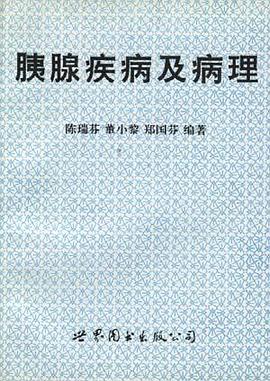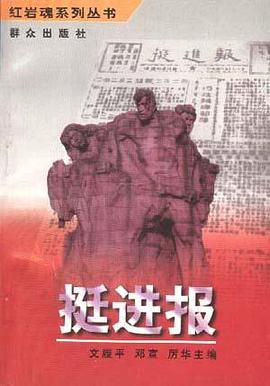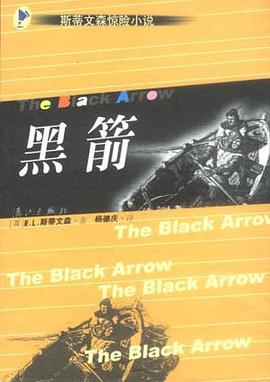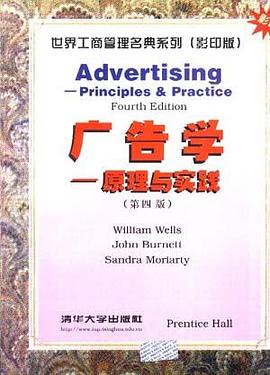Brief Contents
Chapter 1 The Market Economy 1
PART ONE
The Household
Chaptcr 2 Consumer Choice
Chapter 3 Comparative Statics and
Demand
Appendix 3A An Algebraic
Approach to Consumer
Choice
Chapter 4 Price Changes and Consumer
Welfare
Chapter 5 The Household as
Supplier
Chaptert choice under Umcertainty
Chapter 7 The Firm and Its Goals
Chapter 8 Tcchnology and
Production
Chapter 9 Cost
Appendix 9A An Algebraic
Approach to Technology and
Cost
PART THREE
The Competitive Model
Chapter 10 The Price-Taking Firm
hapter 11 Equilibrium in Competitive
Markets
Chapter 12 General Equilibrium and
Welfare Economics
PART FOUR
Market Power
Chapter 13 Monopoly
Chapter 14 More on Price-Making
Firms
Chapter 15 Oligopoly and Strategic
Behavior
Chapter 16 Game Theory
PART FIVE
Missing Markets
Chapter 17 Asymmetric Information
Chapter 18 Externalities and Public
Goods
Progress Check Solutions
References
Index
Contents
Chapter 1 The Market Economy
1.1 Scarcity and Economics
The Three Questions
1. What Is to Be Produced?
2. How Is It to Be Produced?
3. Who Gets the Output?
Section Recap
1.2 Models
A Model ofSchool Attendance
Positive and Normative Analysis
Section Recap
1.3 Thc Workings of a Price System:
Preview
Thc Circular Flow Model
The Supply and Demand Model
Demand
Supply
Equilibrium
Supply and Demand for Inputs
The RolesofPrices
Is This All There Is to It?
Section Recap
PART ONE
The Household
Chapter 2 Consumer Choice
2.1 BasicSetup
2.2 Tastes
Assumption 1 (Completeness)
Assumption 2 (Transitivity)
Assumption 3 (Nonsatiation)
Deriving an Indifference Curve
Assumption 4 (Diminishing Marginal Ratc of
Subsriturion)
Deriving an Indifference Map
Summary ofProperties oflndiffcrence
Curves
Other Types oflndifference Curves
Perfect Substitutes
Perfect Complements
"Bads"
Utility Thcory: Assigning Numbers to
Indifference Curves
Ordinal versus Cardinal Utility
Section Recap
2.3 Budget Constraints
Price-Taking Consumers
Changes in Prices and Income
Summary of Properties of Linear Budget
Constraints
Nonlinear Budget Constraints
Quantity Rationing
Quantity Discounts
Section Recap
2.4 The Consumer's Equilibrium
Interior Solutions
Corner Solutions
Equilibrium with Composite Commodities
Using Utility to Characterize the Consumer's
Equilibrium
Preliminary Evaluation ofthe Theory of
Choice
Section Recap
Chapter 3 Comparative Statics and
Demand
3.1 Price and Income Changes
Own-Price Changes
Derivation ofthe Individual's Demand
Curve
Cross-Price Changes
Demand Curves and Cross-Price Effects
Income Changes
Income Consumption Curve
Demand Curves and Income Changes
Interpreting Data on Consumer Demand
Markct Demand
Individual versus Market Demand
Curves
Section Recap
3.2 Comparative Statics Applied
In-Kind Transfers
Charitable Giving
Section Recap
3.3 Elasticity
Price Elasticity of Demand
Computing Elasticities
Price Elasticity and Total Expenditure
Determinants of the Price Elasticity of
Demand
Price Elasticity for Some Special Cases
Vertical Demand Curve
Horizontal Demand Curve
Unit Elastic Demand Curve
Linear Demand Curve
Cross-Price Elasticity ofDemand
Income Elasticity ofDemand
Section Recap
Appendix 3A An Algebraic Approach to
Consumer Choice
3A.l Utility and Marginal Utility
3A.2 The Lagrange Method for Finding the
Consumer's Equilibrium Deriving Demand
Curves
3A.3 Elasticity
Chapter 4 Price Changes and Consumer
Welfare
4.1 Income and Substitution Effects
Graphical Representation
Algebraic Representation
Section Recap
4.2 Compensating and Equivalent
Variations
Compensating Variation (CV)
Equivalent Variation (EV)
Comparing the CV and EV
Section Recap
4.3 Applying Compensating and Equivalcnt
Variations
Evaluating Price Subsidies
President Carter's Gasoline Tax
Section Recap
4.4 Consumer Surplus
The Demand Curve as a Marginal Valuation
Schedule
Prices and Consumer Surplus
Effect of Price Changes on Consumer
Surplus
Application ofConsumcr Surplus: Analysis ofa
Trade Quota
"Exact" Consumer Surplus and the Compensated
Demand Curve
Compcnsated Demand Curve
Section Recap
Chapter 5 The Household as Supplier
5.1 LaborSupply
Budget Constraint and Indifference Curves
Comparative Statics with the Consumption-
Leisure Model
Labor Supply Curve
Preliminary Evaluation
The Work Incendves ofAFDC
Producer Surplus
Unemploymcnt Insurance
The Supply ofLabor to Occupadons
arket Supply Curve ofLabor
Occupadonal Choice
Secdon Recap
5.2 Capital Supply
Life-Cyde Model
Intertemporal Budget Constraint
Intertemporal Indifference Map
Equilibrium in the Life-Cycle Mode
Comparativc Statics with the Life-Cycle
Model
Saving and Interest Rates
SupplyofSaving
Is the Life-Cycle Model Relevant?
The Taxation of Interest Income
Section Recap
5.3 More on Present Value
Fundamental Formulas
Prescnt Value in Action
Michael Wittkowski's Lottery Price
"Truth-in-Lending" Laws
Perpctuitics
Secrion Recap
5.4 Human Capital
Human Capital as the Only Asset
Human and Physical Capital
Section Recap
Chapter 6 Choice under Uncertainty
6.1 Gambles and Contingent
Commodities
Budget Constraint
Probabilitywid Expected Value
The Fair Odds Line
Preferences
Equilibrium
Section Recap
6.2 Some Applications of Condngent
Commodities
Risk Premia
The Rolc of Diversification
Tax Evasion
Designing Policy toward Evasion
Evaluating the Tax Evasion Model
Secrion Recap
6.3 Insurance
Fair Insurancc
Budget Constraint with Fair Insurance
Preferences
Equilibrium Amount ofFair Insurance
The Demand for "Unfair" Insurance
Changing the Premium
Changing the Probability ofa Lawsuit
The Importance of Insurance
Section Recap
6.4 Decision Making with Many Uncertain
Outcomes: von Neumann-Morgenstern
Utility
Decision Trees
Utility Functions for Uncertain Situations
Sequenrial Decisions
Applying von Neumann-Morgenstern Utility
Functions: The Value oflnformation
Section Recap
The Firm
Chapter 7 The Firm and Its Goals
7.1 What Do Firms Do?
Why Do Firms Exist?
Economic Profit
User Cost of Capital
Apple Computer Forgets How to Price
Memory
Section Recap
7.2 The Firm as Supplier: The Profit-
Maximizing Level of Output
Total Revenue Curve
Total Economic Cost Curve
Maximizing Profit
The Optimal Output Level for an Active
Firm
The Shut-Down Dedsion
Refractories: Staying in Business to Lose
Money
East Germany: Shutting Down an
Economy
Section Recap
7.3 Do Firms Really Maximize Profits?
The Divorce of Ownership and Control
Control Mechanisms
Internal Control Mechanisms
External Control Mechanisms
Section Recap
7.4 Profit Maximizarion over Time and under
Uncertainty
Intertemporal Choice
Stockholder Myopia?
Decisions under Uncertainty
Policy Implications ofExpected Profit
Maximization
Gold Mines, Shutdown, and Opdon
Value
Secrion Recap
Chapter 8 Technology and Production
8.1 Technology
The Production Function
Isoquants
How Many Inputs?
What Is Output?
The Decision-Making Horizon
Section Recap
8.2 Properties ofthe Proauction Function
Marginal Physical Product
Increasing Marginal Returns
Constant Marginal Returns
Diminishing Marginal Returns
A Changing Pattern ofMarginal
Returns
Marginal Rate ofTechnical Substitution
Two Polar Cases ofFactor Substiturion
The Relationship between MPP and
MRTS
Returns to Scale
Constant Returns to Scale
Increasing Returns to Scale
Decreasing Returns to Scale
Graphing Returns to Scale
Marginal Returns and Returns to Scale
Secrion Recap
Chapter 9 Cost
9. l Cost in the Short Run
Properties ofShort-Run Costs
Variable Cost
Marginal Cost
Average Cost
The Relationship between Short-Run
Marginal Cost and Short-Run Average
Variable Cost
Secrion Recap
9.2 Cost in the Long Run
Graphical Analysis
Isocost Lines
Finding the Economically Efficicnt Input
Mix
Algebraic Interpretation
Comparative Statics
Factor Prices
Technology
The Nature ofOutput
Output Level
Summary of Comparative Statics
Analysis
Deriving the Long-Run Total Cost Curve
Properties ofLong-Run Costs
Long-Run Marginal Cost
Long-Run Average Cost
Long-Run Costs Compared to Short-Run
Costs
Section Recap
Appendix 9A: An Algebraic Approach'to
Technology and Cost
9A.l Properriesofthe Production
Function
9A.2 Cost Minimization in the Long Run
9A.3 More than Two Factors of
Production
Properties ofthe Production Function
Cost Minimization in the Long Run: The
Lagrange Method
9A.4 Estimating Production Functions
Alternative Strategics
Cstimation Problems
Using the Cobb-Douglas Production
Function
PART THREE
The Competitive Model
Chapter lO The Price-Taking Firm
lO.l Supply in Product Markets
Two Rules for Profit Maximizarion
Marginal Output Rule
Shut-Down Rule
The LongandtheShortofthe Matter
Short-Run Supply Curves
The Firm's Short-Run Supply Curve
Long-Run Supply Curves
Deriving a Firm's Long-Run Supply
Curve
Comparison ofthe Firm's Short- and Long-
Run Supply Curves
Section Recap
l0.2 Factor Demand
Short-Run Factor Demand
The Marginal Benefit ofan Input
The Marginal Cost of an Input
The Profit-Maximizing Input Level
Long-Run Factor Demand
Factor Substitution Effect
Output Effect
Factor Substitution and Output Effect
Simultaneously
Algebraic Approach
Investment and the Demand for
Capital
Secrion Recap
Chapterll Equilibrium in Competitive
Markcts
l l. l The Basic Model of Perfect
Competition
Fundamental Assumptions
The Appropriate Market Structure
Identifying a Competitive Market
Structure
Finding a Competitive Equilibrium
The Short Run
Market Supply by Firms
Market Demand
Market Equilibrium
The Individual Supplier's Perspective
TheRoleofPrice
The Long Run
Market Supply
Market Demand
Market Equilibrium
The Individual Supplier's Perspective
The Long Run Is a Short Run Too
Input Price Taking by the Firm But Not by the
Industry
Heterogeneous Suppliers
Short-Run Analysis
Long-Run Analysis
Economic Rent
Secrion Recap: Four Steps to Finding an
Equilibrium
l1.2 Using the Competitive Model
The EffectsofTaxes
Elasticities and Incidence
Who Pays for Social Sccurity?
The Elasticity ofDerived Demand
Section Recap
l l. 3 Normative Analysis of Perfect
Competition
Total Surplus as a Measure ofPerformance
Are Value Judgments Being Made?
Prices versus Quanriries and Their Roles in
Attaining Efficiency
Evaluating Rent Control
Normative Analysis of a Sales Tax
Section Recap
Chapter 12 General Equilibrium and
Wclfare Economics
l 2. l General Equilibrium Analysis
Supply and Demand Curves
Gencral Equilibrium Analysis ofthe
Minimum Wage
General Equilibrium in a Pure Exchange
Economy
Edgeworth Box
Section Recap
12.2 Welfare Economics
Consumption Efficiency
Consumption Efficiency and Water
Rationing
Production Efficicncy
Production Possibilitides Curve
Pareto Efficiency
The First Fundamental Theorem ofWelfare
Economics
Intuition behind the First Welfare
Theorem
Prices and Decentralization
Are Competirive Prices Fair?
The Theory ofthe Second Best
The First Welfare Theorem and Total Surplus
Analysis
The Second Fundamental Theorem ofWelfare
Economics
Section Recap
12.3 The Welfare Economics ofTime and
Uncertainty
Efficiency and Intertemporal Resource
Allocation
Efficiency and Uncertainty
Section Recap
12.4 Welfare Economics and the Real
World
Market Failure
Market Power
Nonexistence ofMarkets
Market Failure and a Role for Government
Intervention
Equity
Buying into Welfare Economics
Section Recap
Market Power
Chapter 13Monopoly
13.l The Basic Monopoly Model
The Fundamental Assumptions
The Appropriate Market Structure
Equilibrium
Marginal Revenue for a Monopolist
Applying the Rules for Profit
Maximization
Price Elasticity and Profit Maximization
Thc Long and the Short of Monopoly
Monopoly Comparcd to Perfect
Competition
Taxing a Monopolist
Incentives to Innovate
Process Innovation
Product Innovation
Section Recap
l 3.2 Normative Analysis ot Monopoly
Equity
Efficiency
A Partial Equilibrium Analysis
A General Equilibrium Analysis
Scction Recap
13.3 Public Policy toward Monopoly
Patent Policy
Antitrust Policy
Determinants ofMarket Structure
Regulation ofMonopoly
Section Rccap
13.4 Price Discrimination
Conditions Necessary for Profitable Price
Discrimination
First-Degree Price Discrimination
Welfare Effects ofFirst-Degree Price
Discrimination
Second-Degree Price Discrimination
Welfare Effects ofSecond-Degree Price
Discrimination
Third-Degree Price Discrimination
Welfare Effects ofThird-Degree Price
Discrimination
Section Recap
Chapter 14 More on Price-Making Firms
14.1 Cartels
Cartels in Product Markets
The Full Cartel Outcome
Cheating on Cartel Agreements
Entry as a Limit on Cartel Success
Regulation as Cartel Enforcement
The Welfare Cost ofMonopoly
Reconsidered
Labor Unions
Secdon Recap
14.2 Monopolistic Competition
The Fundamental Assumptions
The Appropriate Market Structure
Equilibrium
Short-Run Equilibrium
Long-Run Equilibrium
Normarive Analysis ofMonopolistic
Competition
The So-Called Excess Capacity
Theorem
The Market Equilibrium Compared with the
Efficient Outcome
Secrion Recap
14.3 Monopsony
The Fundamental Assumptions
The Appropriate Market Structure
The Monopsonistic Equilibrium
Marginal Factor Cost for a
Monopsonist
Equilibrium
Normarive Analysis ofMonopsony
Equity
Efficiency
Buycr Cartels: Amateur and Professional
Athletes
Secrion Recap
Chapter 15 Oligopoly and Strategic
Behavior
The Fundamental Assumptions
The Appropriate Market Structure
l 5. l Quantity-Setting Oligopolists
Market Equilibrium
Equilibrium Defincd
Finding a Cournot Equilibrium
Deriving the Best-Response Functions
Using Reaction Curves to Find the Cournot
Equilibrium
Comparison ofCournot, Monopoly, and Perfect
Competirion
Viability ofthe Full Cartel Agreement
Are We Back to Perfect Competition?
An Algebraic Example ofCournot
Equilibrium
Assumptions ofthe Examplc
Calculating the Reaction Curves
Calculating the Cournot Equilibrium
Comparative Statics
Comparison of Cournot Duopoly,
Competition, and Monopoly
Section Recap
15.2 Pricc-Setting Oligopolists
Bertrand Competition
Finding the Bertrand Equilibrium
Cournot or Bertrand?
Why Are Bertrand and C.ournot Duopolies So
Differcnt?
Which Model Should We Use?
Section Recap
15.3 Cooperation and Punishment
A Model ofRepeated Interaction
General Predictions
Market Structure and Collusion
Section Recap
Chapter 16 Game Theory
16.1 Some Fundamentals of Game Theory
Game Trees: Decision Trees for Strategic
Situations
Dominant Stratcgy Equilibrium
Perfect Equilibrium
Secrion Recap
16.2 Applying Game Theory: Oligopoly with
Entry
Credible Threats and Commitment
More on Strategic Invcstment in Oligopoly
Section Recap
16.3 Games oflmperfect and Incomplete
Information
The Prisoners' Dilemma: A Game oflmperfect
Information
Mixed Strategies
A Bargaining Game of Incomplete
Information
Limiring Pricing: A Game oflncomplete
Information
Section Recap
16.4 Repeated Games
Finitely Repeated Games
Section Rccap
Missing Markets
Chapter l7 Asymmetric Information
17.1 Signaling and Screening
Another Look at Price Discrimination
Normative Analysis ofSecond-Degree Price
Discrimination
Real-World Screening
Comperitive Market Signaling
Normative Analysis of Educauon as a
Signal
Is Educarion Really Just a Signal?
Section Recap
17.2 Adverse Selection
More on Insurance Markets
The Full-lnformation Equilibrium
The Asymmetric-lnformation
Equilibrium
The Efficicncy Effects ofAdverse
Selection
Market Responses to Adverse Selection
Other Markets in Which Adverse Selection Is
Important
Labor Markets
The Market for Human Blood
Government Responses to Hidden
Characteristics
Section Recap
l7.3 Hidden Actions
Moral Hazard in insurance Markets
Fire Prevention in the Absence of
Insurance
Moral Hazard and the Effects of
Insurance
Effidency Eftects ofMoral Hazard
Co-lnsurance and Deductibles
Employer-Employee Relationships
Observable Shirking
Unobservable Shirking
Two Puzzles
Moral Hazard in Product Markets
Reputation as a Hostage
Section Recap
Chapter 18 Externalities and Public
Goods
l 8. l Externalities and Efficiency
Missing Markets
Private Cost versus Social Cost
Section Recap
18.2 Responses to Externalities
Private Responses
Mergers
Social Conventions
Bargaining and the Coase Theorem
Rcasons for Failure ofNegotiations
Government Responses to Externalities
Regulation
Corrective Taxes
Creating a Market
Section Recap
18.3 PublicGoods
Efficient Provision ot' Public Goods
Impure Public Goods
Market Provision of Public Goods
Responses to the Public-Good Problem
Section Recap
Progress Check Solutions
References
Index
· · · · · · (
收起)






















